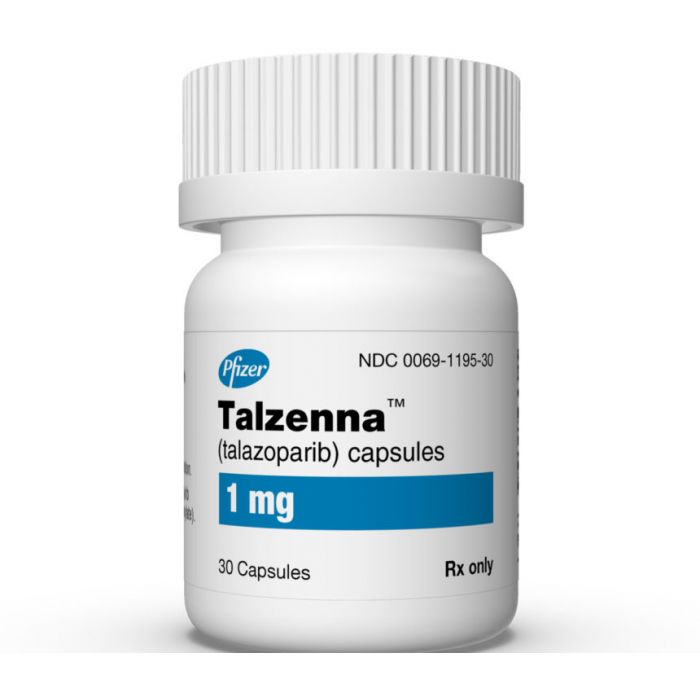

TALZENNA is the first and only PARP inhibitor approved in combination with standard of care XTANDI for mCRPC patients in the European Union
The European Commission (EC) has approved Pfizer’s TALZENNA (talazoparib), an oral poly ADP-ribose polymerase (PARP) inhibitor, in combination with XTANDI (enzalutamide), for the treatment of adult patients with metastatic castration-resistant prostate cancer (mCRPC) in whom chemotherapy is not clinically indicated. With this approval, TALZENNA is now the first and only PARP inhibitor licensed in the European Union for use with XTANDI for patients with mCRPC, with or without gene mutations.
“New treatment options are needed to increase the proportion of patients with metastatic castration-resistant prostate cancer who can benefit from current anticancer medicines that keep the disease under control for longer,” said Robert Jones, MBChB, PhD, Professor of Clinical Cancer Research, University of Glasgow. “The European Commission’s approval of talazoparib in combination with enzalutamide offers a meaningful advancement for the treatment of patients with metastatic castration-resistant prostate cancer, the most advanced and aggressive stage of the disease.”
“After years of fighting prostate cancer, it can be devastating for a patient to learn that their cancer has stopped responding to testosterone-lowering treatments. At this stage of the disease, the prognosis is generally poor,” said Erik Briers, MS, PhD, Vice Chairman, Europa UOMO, a European advocacy movement for people with prostate cancer. “Patients urgently need new treatment options and TALZENNA in combination with XTANDI can bring new hope to these patients.”
This approval by the European Commission of TALZENNA in combination with XTANDI for the mCRPC indication is valid in all 27 EU member states plus Iceland, Liechtenstein, and Norway.
The approval is based on data from the Phase 3 TALAPRO-2 trial, a multicenter, randomized, double-blind, placebo-controlled study, evaluating two mCRPC patient cohorts: Cohort 1 (all-comers [n=805]) and Cohort 2 (those with HRR gene mutations [HRRm; n=399]). The results from TALAPRO-2 Cohort 1, which were published in The Lancet, showed that treatment with TALZENNA plus XTANDI reduced the risk of disease progression or death by 37% versus placebo plus XTANDI (Hazard Ratio [HR]: 0.63; 95% Confidence Interval [CI], 0.51–0.78; P< 0.0001), meeting the study’s primary endpoint of improving radiographic progression-free survival (rPFS). At the time of the analysis, the median rPFS for those treated with TALZENNA plus XTANDI had not yet been reached versus 21.9 months for those treated with placebo plus XTANDI. Median rPFS is defined as the timepoint in which 50% of patients in each treatment arms have progressed. A trend in overall survival (OS), a key secondary endpoint, favoring TALZENNA plus XTANDI was also observed, though these data are immature. The safety of TALZENNA plus XTANDI in the TALAPRO-2 trial was generally consistent with the known safety profile of each medicine.
“Today’s approval of TALZENNA in combination with XTANDI represents an important advancement for men living with prostate cancer in Europe,” said Chris Boshoff, M.D., Ph.D., Chief Oncology Officer, Executive Vice President, Pfizer. “The results from the pivotal TALAPRO-2 trial showed that this combination offers an effective treatment that addresses disease progression in patients with or without any specific gene mutation.”
TALZENNA in combination with XTANDI was approved by the U.S. Food and Drug Administration (FDA) for the treatment of adult patients with HRR gene-mutated mCRPC in June 2023. Pfizer has also shared the TALAPRO-2 data with other regulatory agencies to support regulatory filings.

